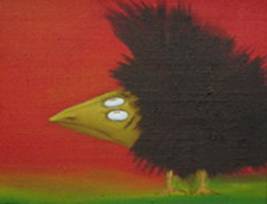CUNNING WOMAN-The term
DEMON STAR-Also known as Lilith’s star or Algol, is in the constellation Perseus. It was considered the most dangerous star in the heavens, bringing evil and death, for it seems to wink like a great eye. A girl born under its astrological influence was said to bring a curse upon her family and any man she married. The star appears to wane in brightness over four and a half hours, remaining dim for twenty minutes, then increases to its original intensity for sixty-nine hours. We now know this is caused by a dimmer star eclipsing a brighter one.
DRINDLE-East Anglian dialect word for a trickle of water or tiny stream.
HARROW-In some places, the name derives from
GREEN SICKNESS-Serious, often fatal, anaemia caused by what today would be labelled
HENBANE-Botanical Name
JACK-IN-THE-GREEN/DEVIL’S PRICK-Botanical name
KA-A cry of affirmation, meaning “so may it be,” traditionally used in the Norfolk and Suffolk area to seal a spell.
LILITH-In the book of Genesis in the Bible there are two different accounts of the creation of “woman.” In medieval times this was explained by the idea that Adam had two wives. Lilith, his first wife, was created at the same time as Adam from the dust. Therefore, regarding herself as equal to him, she refused to lie beneath him when they made love. She fled Eden, and God was forced to create a second woman, Eve, from Adam’s rib. Lilith remained immortal, but she was transformed into a demon who made men get erections in their sleep, and caused the death of newborn babies.
MOULD-When the high spring and autumn tides wash over a beach they leave behind salt water, which is dried by sun and wind, forming a salty crust in the top layer of sand or silt. This layer is known as
NEED-FLAME-On Samhain night, what we now call Halloween, all hearth and cooking fires in the village had to be extinguished and relit from a
ORDEAL BY WATER-Under King Athelstan (925-939) and later, Edward the Confessor (1042-1066), trial by water
PUREFINDING-Collecting dog dung to sell to leather tanners. Dog excrement was vital to purify skins and hides by breaking down the collagenous proteins prior to curing and tanning. Treating the skins with dog excrement was
RECKLING-(Also written as
ROUGH MUSIC-Sometimes know as ran-tanning, it was a way of expressing social disapproval of such things as adultery or wife-beating. Neighbours would gather outside a wrongdoer’s house for three successive nights banging metal objects. If by the third night the victim hadn’t taken the hint and left the neighbourhood, he or she would be dragged out of the home and beaten. It was erroneously believed that if a “ran-tanning” was in progress and the victim was badly injured or died as a result of the beating, the assailants could not be punished by law. This custom, often used on those thought to be engaged in sexual immorality, continued well into the nineteenth century all over Britain, and in one sense still continues today when local people surround houses of suspected paedophiles to try to force them out.
SOUL-SCOT-As well as each household having to give tithes, a percentage of livestock, grain, candles, et cetera, to the Church on pain of minor excommunication, the Church also demanded scots, or sums of money to perform certain rites such as christenings and marriages, including a soul-scot, money paid to the priest to perform the burial rites, in addition to money which also had to be paid for a Mass to be said for the soul of deceased. This scot was enshrined in law by King Alfred, A.D. 871-901, and was hated by the poor, who saw it as a tax on death.
TOADSMAN-An East Anglian term for a horse whisperer. A man could gain extraordinary powers over horses, pigs, and people, by killing a Natterjack toad and carrying the corpse against his chest until it rotted to bones. The bones were floated in a river at midnight. The bone which floated upstream was magic and the person who took hold of it would be pulled across the river by it, after which they would possess the power.
WELLER-Along the East Coast a common method of producing salt in the Middle Ages was by sand and silt washing. The brine washed from the sand would be boiled in lead pans over peat fires. This was done by the wellers who had the most difficult job in the salt-making process. Brine contains six different salts, each crystallising out at a different rate. Only the third, sodium chloride, was used for preservation and flavouring, so that the weller had to be adept at collecting this particular salt at precisely the right time without its becoming contaminated by the others. The remaining salts, collectively known as the bittern, were usually discarded.
about the author

KAREN MAITLAND has a doctorate in psycho-linguistics. Her British debut novel,


